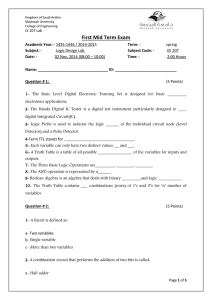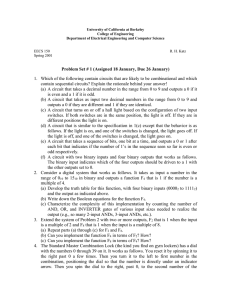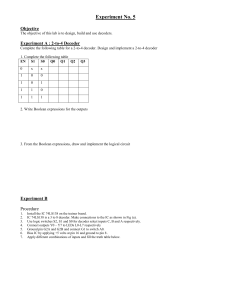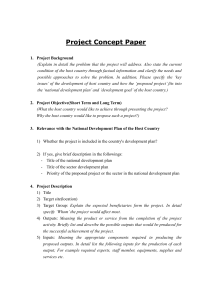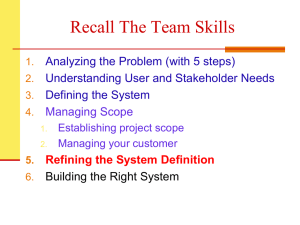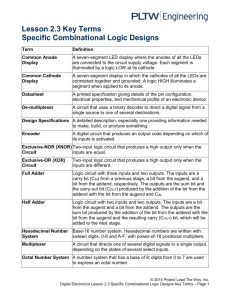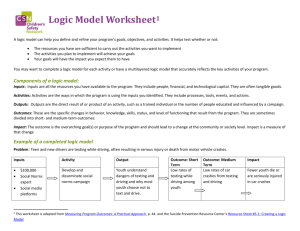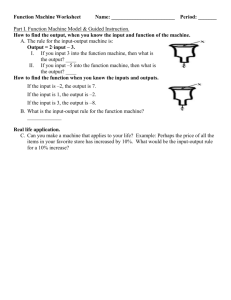word97
advertisement
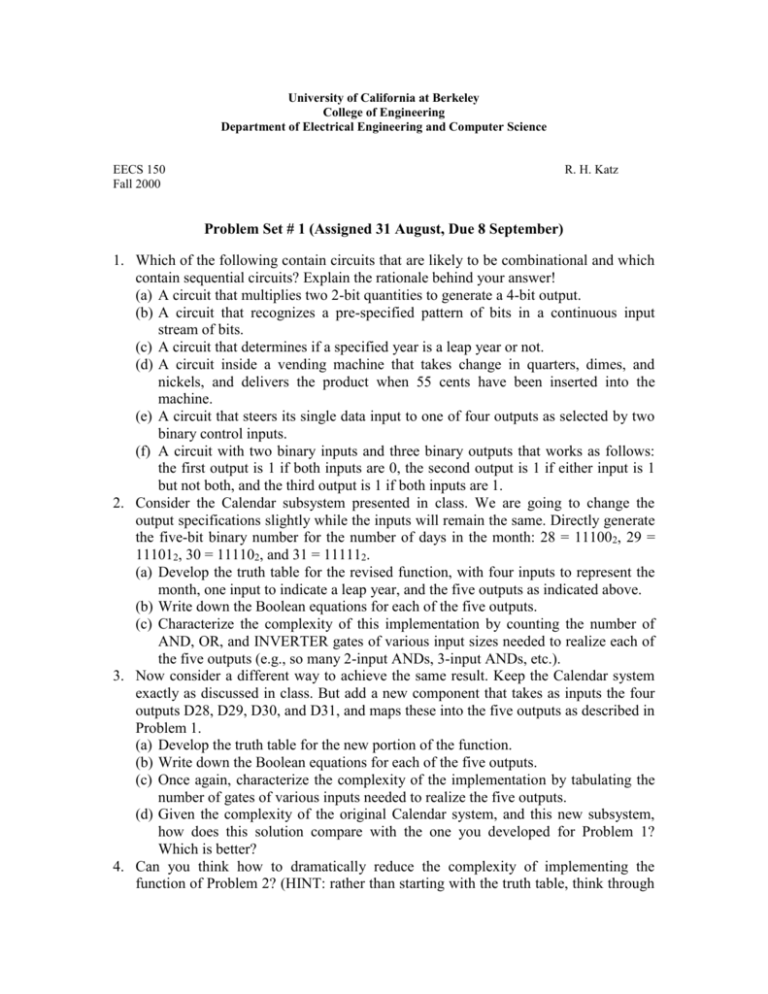
University of California at Berkeley College of Engineering Department of Electrical Engineering and Computer Science EECS 150 Fall 2000 R. H. Katz Problem Set # 1 (Assigned 31 August, Due 8 September) 1. Which of the following contain circuits that are likely to be combinational and which contain sequential circuits? Explain the rationale behind your answer! (a) A circuit that multiplies two 2-bit quantities to generate a 4-bit output. (b) A circuit that recognizes a pre-specified pattern of bits in a continuous input stream of bits. (c) A circuit that determines if a specified year is a leap year or not. (d) A circuit inside a vending machine that takes change in quarters, dimes, and nickels, and delivers the product when 55 cents have been inserted into the machine. (e) A circuit that steers its single data input to one of four outputs as selected by two binary control inputs. (f) A circuit with two binary inputs and three binary outputs that works as follows: the first output is 1 if both inputs are 0, the second output is 1 if either input is 1 but not both, and the third output is 1 if both inputs are 1. 2. Consider the Calendar subsystem presented in class. We are going to change the output specifications slightly while the inputs will remain the same. Directly generate the five-bit binary number for the number of days in the month: 28 = 111002, 29 = 111012, 30 = 111102, and 31 = 111112. (a) Develop the truth table for the revised function, with four inputs to represent the month, one input to indicate a leap year, and the five outputs as indicated above. (b) Write down the Boolean equations for each of the five outputs. (c) Characterize the complexity of this implementation by counting the number of AND, OR, and INVERTER gates of various input sizes needed to realize each of the five outputs (e.g., so many 2-input ANDs, 3-input ANDs, etc.). 3. Now consider a different way to achieve the same result. Keep the Calendar system exactly as discussed in class. But add a new component that takes as inputs the four outputs D28, D29, D30, and D31, and maps these into the five outputs as described in Problem 1. (a) Develop the truth table for the new portion of the function. (b) Write down the Boolean equations for each of the five outputs. (c) Once again, characterize the complexity of the implementation by tabulating the number of gates of various inputs needed to realize the five outputs. (d) Given the complexity of the original Calendar system, and this new subsystem, how does this solution compare with the one you developed for Problem 1? Which is better? 4. Can you think how to dramatically reduce the complexity of implementing the function of Problem 2? (HINT: rather than starting with the truth table, think through a simple implementation of direct Boolean functions to implement the mappings between the four D inputs and the five binary outputs). (a) Write down your equations for a simplified implementation of Problem 2. (b) Characterize its complexity in the same way as in part (c) of the above problems. 5. Now consider the door combination lock example discussed in class. This implementation enters an error state as soon as an incorrect bit is entered, making this an exceedingly easy lock to pick! Change the design so all three combination bits must be entered before an error indication is given. (a) Draw a revised state diagram for your revised design. (b) How many states does your design now have? Write down your state table. (c) Choose a state encoding and describe the rationale behind your choice. Write down your encoded state table. (d) Consider the output function for Open. What was the Boolean equation for the original implementation as described in class? What is the Boolean equation for your implementation? How does its complexity compare with the original?

